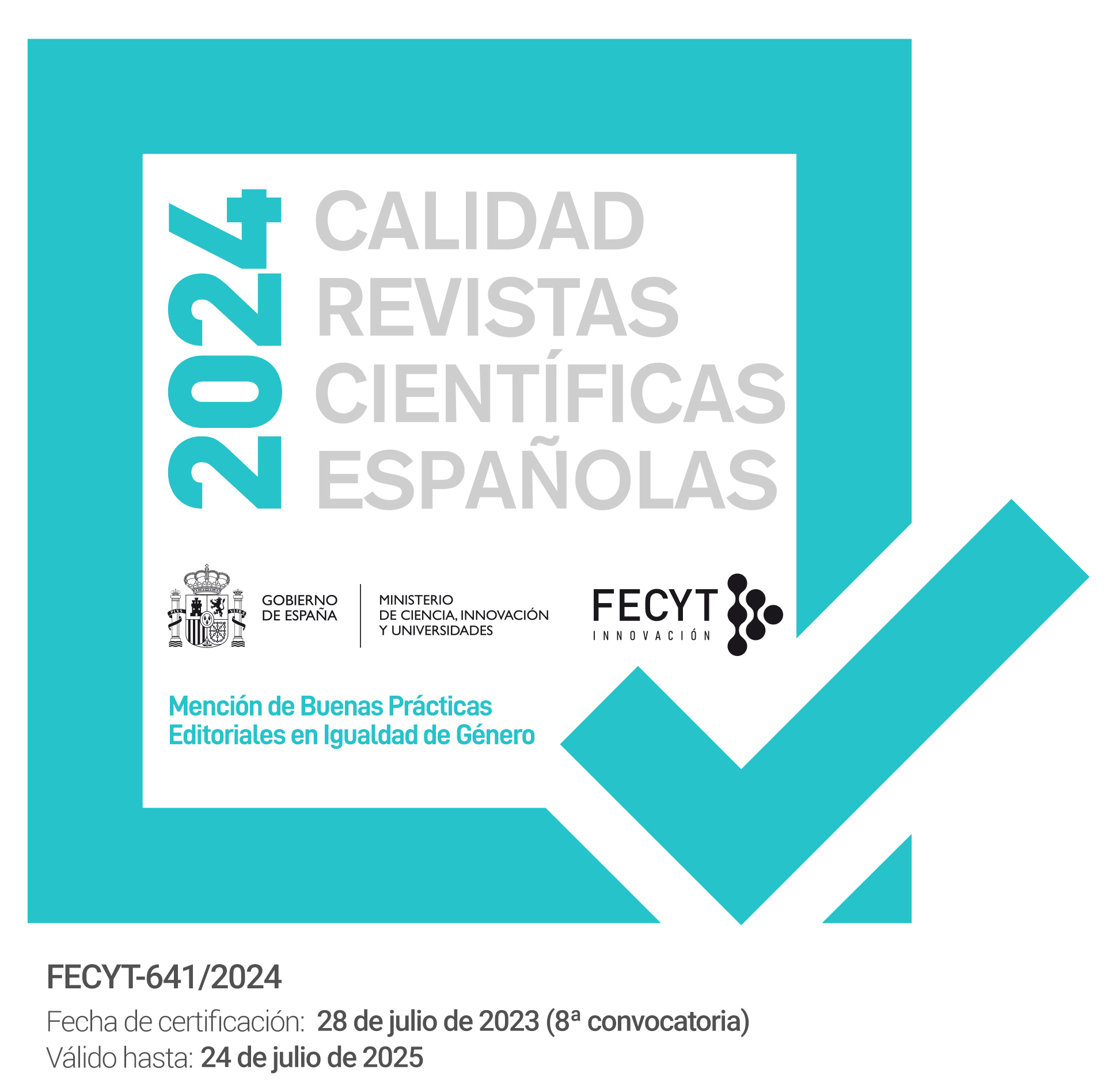Social History of the Language of the Mudejars of Seville
DOI:
https://doi.org/10.12795/PH.2020.v34.i02.08Keywords:
Mudejars of Seville, Arabic language, colonization, Castilianization, Reconquest.Abstract
This article attempts to reconstruct the linguistic history of the city of Seville and its area of influence after the Reconquest. In the 13th century, in the Betic Andalusia, a political, social and cultural rupture took place. The Andalusi stage in the history of Seville was closed and the Castilian stage began. How did this change affect the indigenous population? Under what conditions did the meeting between the two linguistic communities occur: the Arabic speakers and the Romance speakers? What was the fate of the Mudejars and the Arabic language in Andalusia? These are some of the questions, whose answer we will try to find in the following pages.
Downloads
References
Alvar, M. (1990). Sevilla, macrocosmos lingüístico. En M. Alvar, Norma lingüística sevillana y español de América (pp. 19-44). Ed. Cultura Hispánica.
Cabrera Muñoz, E. (2010). Tópicos y realidades sobre la organización de Andalucía tras la reconquista. En A. Malpica Cuello, R.G. Peinado Santaella y A. Fábregas García (Eds.), Historia de Andalucía, VII Coloquio “¿Qué es Andalucía? Una revisión histórica desde el medievalismo” (pp. 179-202). Universidad de Granada.
Cano Aguilar, R. (2001). La historia del andaluz. En C.L. Reina Reina (Coord.), Actas de las Jornadas sobre ̏El habla andaluza. Historia, normas, usos″ (pp. 33-57). Ayuntamiento de Estepa.
Collantes de Terán Sánchez, A. (1981). Los mudéjares sevillanos. En I Simposio Internacional de Mudejarismo (pp. 225-235). CSIC.
García Fitz, F. (2000). El cerco de Sevilla: reflexiones sobre la guerra de asedio en la Edad Media. En M. González Jiménez (Coord.), Sevilla 1248. Congreso Internacional Conmemorativo del 750 Aniversario de la Conquista de la Ciudad de Sevilla por Fernando III, Rey de Castilla y León (pp. 115-154). Centro de Estudios Ramón Areces.
García Sanjuán, A. (2004). Causas inmediatas y alcance de la revuelta mudéjar de 1264. En IX Simposio Internacional de Mudejarismo. Mudéjares y moriscos, cambios sociales y culturales (pp. 505-518). Instituto de Estudios Turolenses, Centro de Estudios Mudéjares.
Garulo, T. (1983). Los arabismos en el léxico andaluz (Según los datos del Atlas Lingüístico y Etnográfico de Andalucía). Instituto Hispano-Árabe de Cultura.
González Arce, J.D. (1989). Cuadernos de ordenanzas y otros documentos sevillanos del reinado de Alfonso X. Historia. Instituciones. Documentos, 16, 103-132.
González Jiménez, M. (1985). Andalucía Bética. En J.A. García de Cortázar, E. Portela, E. Cabrera et al, Organización social del espacio en la España medieval. La Corona de Castilla en los siglos VIII al XV (pp. 163-194). Ariel.
González Jiménez, M. (1988a). En torno a los orígenes de Andalucía. La repoblación del siglo XIII. Universidad de Sevilla.
González Jiménez, M. (1988b). Los mudéjares andaluces (ss. XIII-XV). En E. Cabrera (Coord.), Andalucía entre Oriente y Occidente (1236-1492). Actas del V Coloquio Internacional de Historia Medieval de Andalucía (pp. 537-550). Excma. Diputación Provincial de Córdoba, Servicio de Publicaciones.
González Jiménez, M. (1993). La condición social y actividades económicas de los mudéjares andaluces. En IV Simposio Internacional de Mudejarismo. Economía (pp. 411-426). Instituto de Estudios Turolenses, Centro de Estudios Mudéjares.
González Jiménez, M. (1995a). Del Duero al Guadalquivir. Repoblación, despoblación y crisis en la Castilla del siglo XIII. En Despoblación y colonización del valle del Duero: siglos VIII-XX. IV Congreso de Estudios Medievales (pp. 209-224). Fundación Sánchez Albornoz.
González Jiménez, M. (1995b). El trabajo mudéjar en Andalucía. El caso de Sevilla (siglo XV). En VI Simposio Internacional de Mudejarismo (pp. 39-56). Instituto de Estudios Turolenses, Centro de Estudios Mudéjares.
González Jiménez, M. (2008). De la expansión a la crisis: la sociedad andaluza entre 1225 y 1350. En M. González Jiménez, La repoblación del Reino de Sevilla en el siglo XIII (pp. 329-366). Universidad de Granada.
González Jiménez, M. (2009). Los ritmos de la repoblación: El Reino de Sevilla en vísperas de la conquista de Niebla. En M. González Jiménez, Estudios alfonsíes (pp. 193-204). Universidad de Granada.
González Jiménez, M. (2010a). ¿Qué es Andalucía? Una revisión histórica desde el medievalismo. En A. Malpica Cuello, R.G. Peinado Santaella y A. Fábregas García (Eds.), Historia de Andalucía, VII Coloquio “¿Qué es Andalucía? Una revisión histórica desde el medievalismo” (pp. 13-29). Universidad de Granada.
González Jiménez, M. (2010b). Los otros andaluces: los moros que no se quisieron ir. Boletín de la Real Academia Sevillana de Buenas Letras: Minervae Baeticae, 38, 85-98.
González Jiménez, M. y Montes Romero-Camacho, I. (2001-2002). Los mudéjares andaluces (siglos XIII-XV). Aproximación al estado de la cuestión y propuesta de un modelo teórico. Revista d’historia Medieval, 12, 47-78.
Ladero Quesada, M.A. (1978). Los mudéjares de Castilla en la Baja Edad Media. Historia. Instituciones. Documentos, 5, 257-304.
Ladero Quesada, M.A. (2008). La formación medieval de España: territorios, regiones, reinos. Alianza.
Maíllo Salgado, F. (1998). Los arabismos del castellano en la Baja Edad Media. Consideraciones históricas y filológicas. Universidad de Salamanca.
Miteva, Y. (2017). Historia social de la lengua de los mudéjares. La asimilación lingüística de la minoría islámica en la Península Ibérica en la etapa medieval. [Tesis doctoral no publicada. Universidad de La Laguna, Facultad de Humanidades].
Moreno-Fernández, F. (2009). La lengua española en su geografía. Arco Libros.
Narbona Jiménez, A., Cano Aguilar, R. y Morillo-Velarde Pérez, R. (2011). El español hablado en Andalucía. Universidad de Sevilla.
Ramírez del Río, J. (2012). Al-Dajira al-saniyya: una fuente relevante para el siglo XIII en la Península Ibérica. Al-Qantara, 33 (1), 7-44. https://doi.org/10.3989/alqantara.2010.001
Ruhstaller, S. (1992). Proyecto de un Diccionario toponomástico de Andalucía occidental. En M. Ariza Viguera (Coord.), Actas del II Congreso Internacional de Historia de la Lengua Española, vol.2, (pp. 1029-1036). Pabellón de España.
Ruhstaller, S. (2003). La toponimia andaluza de origen árabe. En G. Cano García (Dir.), Gran Enciclopedia Andaluza del siglo XXI, vol.2, (pp. 314-318). Ed. Tartessos.
Valencia, R. (1992). La emigración sevillana hacia el Magreb alrededor de 1248. En Historia, Ciencia y Sociedad, Actas del II Coloquio Hispano-Marroquí de Ciencias Históricas (pp. 323-327). Agencia Española de Cooperación Internacional, Instituto de Cooperación con el Mundo Árabe.
Wagner, K. (1971). Un padrón desconocido de los mudéjares de Sevilla y la expulsión de 1502. Al-Andalus, 36 (2), 373-382.
Wagner, K. (1978). Regesto de documentos del Archivo de Protocolos de Sevilla referentes a judíos y moros. Publicaciones de la Universidad de Sevilla.
Downloads
Published
How to Cite
Issue
Section
License
The printed and electronic editions of this Journal are edited by the University of Seville Editorial, and the source must be cited in any partial or total reproduction.
Unless otherwise indicated, all the contents of the electronic edition are distributed under a license of use and distribution “Attribution-NonCommercial-NoDerivatives 4.0 International” . You can view the informative version and the legal text of the license here. This fact must be expressly stated in this way when necessary.
Authors who publish in this journal accept the following conditions:
- The author/s retain copyright and grant the journal the first publication right, and accept it to be distributed with the Creative Commons By NC ND 4.0 licence, which allows third parties to use what is published whenever they mention the authorship of the work and the first publication in this journal and whenever they do not make commercial use and reuse it in the same way.
- Authors can make other independent and additional contractual agreements for the non-exclusive distribution of the article published in this journal (e.g., include it in an institutional repository or publish it in a book) provided they clearly indicate that the work was published for the first time in this journal.
Authors are allowed and recommended, once the article has been published in the journal Philologia Hispalensis (online version), to download the corresponding PDF and disseminate it online (ResearchGate, Academia.edu, etc.) as it may lead to productive scientific exchanges and to a greater and faster dissemination of published work (see The Effect of Open Access).
- Abstract 401
- pdf (Español (España)) 153
- html (Español (España)) 0







